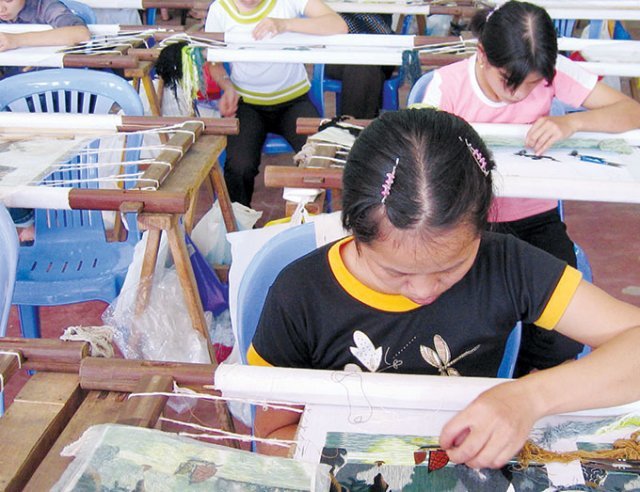 |
Journey of the Senses (JOS), a Ho Chi Minh City-based hospitality company employing people with disabilities (PwD), is an initiative by Vietnamese and Dutch founders Mr. Vu Anh Tu and Mr. Germ Doornbos.
Their businesses are designed around a philosophy that aims to create an ecosystem of creative services built on the capabilities of PwD in order to turn their disadvantages into advantages and allow them to have frontline interaction in a professional service space.
The first restaurant in the ecosystem, Noir - Dining in the Dark, opened in 2014 with a team of blind and visually-impaired people, while Blanc Restaurant opened in 2017 and invites guests to communicate in sign language with its deaf and hearing-impaired staff.
This is partly a social impact business (SIB) or impact enterprise (IE) approach, providing job opportunities for PwD, and partly because of professional hospitality standards where fine-dining experiences are to be unique for guests.
CREATING GREAT VALUES
The two founders believe that placing PwD at the frontline and creating guest interaction is a means of increasing awareness about the blind and deaf communities.
“Disabled staff at JOS now account for about 43 per cent and we hope this will rise to 60 per cent next year,” said Mr. Tu.
“This concept not only provides guests with a unique dark dining experience but also creates job opportunities for the blind and visually-impaired, as the unemployment rate for these people is around 94 per cent.”
Another IE model, Enablecode, a software company that employs computing experts with disabilities, expects to transform the way Vietnamese society perceives PwD.
“We are steadily expanding so we can provide more opportunities to Vietnamese with disabilities to become highly-skilled programmers,” said Ms. Vy Nguyen, Operations Manager at Enablecode.
“Our successful use of collective impact ecosystems has won recognition from the World Bank as one of the best examples of a modern social enterprise globally. We are expecting many opportunities arising from this, which will allow us to scale up.”
Enablecode takes on a large social challenge: how to sustainably create highly-skilled employment for millions of PwD.
“We have succeeded in the first step of proving that PwD can become international-standard software programmers,” she said.
“We have also launched a training program to give this opportunity to more people with disabilities. We have set up a rather unique collaboration between charities, the UN, vocational colleges, business associations, and the corporate sector to all work together on this.”
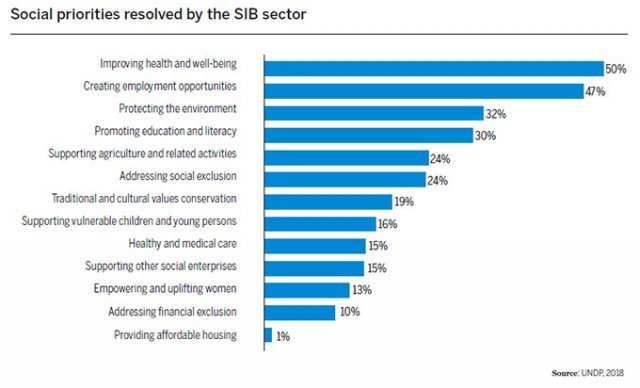 |
Not using PwD like other SIB models, mGreen is a social, non-profit project that aims to create a habit of sorting household waste and protecting the environment. It’s building up the habit of sorting waste at the source, creating jobs and improving the workplace environment for waste collectors.
It also creates sharing values and a sharing economy for smart city solutions based on loyalty technology on mobile apps, including mGreen (for users) and mGreencollector (for collectors).
SIBs and IEs have become more common in Vietnam over the last ten years, according to Ms. Amy Phan, co-founder of Seed Planter, an Entrepreneurship Institute and Accelerator in Vietnam.“Development is still very slow, however, and the model remains a new idea in Vietnam,” she said.
“What we have achieved so far is roughly comparable to what South Korea had achieved 15 years ago. The only difference is after just a few years after first emerging, the model was already recognized in the 2014 Law on Enterprises. As IEs now attract increasing attention from economists, philanthropists, investors, traditional companies, traditional social workers, academia, media, and the public in general, we hope to see more community builders, to support IEs in general and impact startups in particular in terms of developing knowledge, skills and networks and finding seed-stage sources of funding.”
SOCIAL MISSION VS. PROFIT
Commercial enterprises traditionally place their focus on turning a profit while the mission of IEs is to address a social/environmental challenge, with business models and trading activities being the vehicle to stay financially independent and sustainable, according to Ms. Linh Le, Co-founder of Seed Planter.
“In addition to the values brought to the community through job creation and fostering economic growth like any commercial enterprise, IEs also help to address social and/or environmental challenges in an innovative way through their value chain or supply chain, including the empowerment of marginalized groups and unleashing the potential of the community,” she said.
No matter how different their missions may be, commercial enterprises and IEs still share the same characteristic of being a business, which means that products and services must offer real value to customers, Ms. Amy said.
“At Enablecode, we have seen many customers be surprised at who was behind the screen after receiving the final product,” she added. “Customers who make purchase decisions based on the solid values of the product and service are those who will come back to the business and keep it afloat, while those who buy because of empathy will come only once. The former helps IEs become successful.”
Another principle that IEs find useful is to listen with a warm heart while making decisions with a cool mind.
Understanding and empathizing with the struggles of the community of beneficiaries should direct rather than decide the business discipline, especially if the IE works with marginalized or underprivileged groups.
Being a social enterprise actually brings a number of positive business benefits, according to Ms. Vy from Enablecode.
“Prospective clients are often attracted to our social mission,” she said.
“Our clients are made up of people, and people are fundamentally good and hope to help those less fortunate. When we explain that they are doing a social good by giving our disabled programmers tasks, they of course wish to help. We are also clear that we must provide an excellent service standard. The social mission is a business advantage, not a disadvantage.”
The UN Development Program (UNDP) and the National Economics University last year announced a study on fostering SIBs as a sustainable model in Vietnam.
The survey results show that Vietnam currently has about 22,000 SIBs, or 4 per cent of the total number of enterprises operating in the country, concentrated in the fields of agriculture, fisheries, food, education, and skills development.
It also stated that SIBs recognize the unique opportunity and competitive advantage presented by pursuing a social mission, with impact startups in particular uniquely placed to drive new economic models for social good, including the sharing economy, the circular economy, and Industry 4.0.
Embracing sustainable business models is vital for Vietnam, according to UNDP Vietnam.
This involves developing a more sustainable and inclusive approach to economic growth, through innovation and technology, improving productivity while addressing key social and environmental challenges faced by the country, and accelerating the reaching of the sustainable development goals (SDGs).
BARRIERS IN PLACE
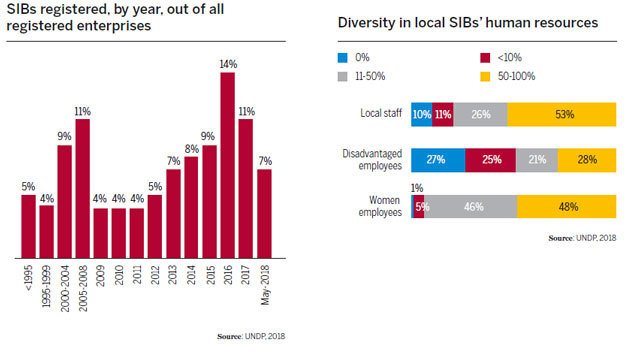 |
The report also indicated that the shortage of capital and human resources capacity, as well as recruiting staff, remain the biggest challenges for the SIB sector in Vietnam.
Ms. Thoa Tran, Co-founder of mGreen, agreed that there is a lack of financial and suitable human resources for SIBs, and local government support and local resources are needed for them to expand in Vietnam.
Due to the gap between what colleges teach and what companies need, Vietnam remains short of high-quality skilled workers.
Talent, especially first-time job seekers, often look for opportunities in well-established MNCs and SMEs, who are usually better than IEs, nonprofits, and public institutes when it comes to employer branding, compensation and benefits, and careers.
These are areas where IEs can learn from traditional enterprises to attract and retain the younger generation, given that millennials and Gen Z are becoming more socially and environmentally-conscious than ever before.
According to Ms. Amy from Seed Planter, the ability to develop a business model serving market needs and to manage the financial side of the business to ensure profitability remain among the leading concerns for impact entrepreneurs, especially those who come from a non-profit background and do not find themselves familiar with these management practices.
Sometimes, IEs tend to place a heavier focus on the “impact” side than the “business” side. This is dangerous because if the IE does not survive, there is no impact at all on their beneficiaries or the community.
Analysts have commented that to foster the growth of SIBs in Vietnam, there must be a method for them to more easily approach capital sources and boost links between them and other types of enterprises. Simultaneously, a specific network for these SIBs must be formed shortly.
To support the growth of SIBs, the UNDP has suggested increasing access to sources of capital and other innovative financing methods, strengthening connections between SIBs and the wider private sector, and establishing a representative network for the SIB sector. " VET
Khanh Chi
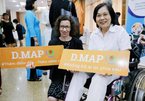
Online map for disabled people
D.Map, a new online map that provides information on accessible venues for people with disabilities, was launched in Hanoi last week on the occasion of Vietnam Disabled People’s Day (April 18).
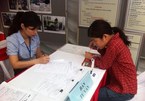
Vietnam ratifies ILO convention on employment for disabled workers
Vietnam has made an important step in the development of its labour market by ratifying ILO Convention 159 on Vocational Rehabilitation and Employment for Disabled Persons, further proving the country’s commitment

Difficulties hinder disabled people’s travel
Everyone wants to travel, but it’s something that’s difficult for disabled people as there are several barriers hindering them from accessing tourism services.
 Social impact businesses raise awareness about people with disabilities and create major value for the community.
Social impact businesses raise awareness about people with disabilities and create major value for the community.